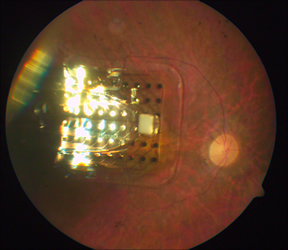If you flinch at the sight of a needle or face difficulty in swallowing pills, here’s an alternative method to alleviate your pain. The Centre for Biomedical Engineerin at IIT Delhi has created a device, which can be worn like a watch, to administer medicines using electric current. Agonizing as it may sound, the process is pain-free, claim researchers.
Based on a concept called Iontophoresis, the process includes application of low intensity current to the skin which causes a drug to permeate inside without any needle pricks.
This is a preview of Drug Delivery Without Pain: Medical Device from IIT, Delhi.
Read the full post (544 words, 1 image, estimated 2:11 mins reading time)
Watch any TV medical drama and you’ll see a defibrillator in action. During tense moments, defibrillators bring patients back from the brink of death with a dramatic shock. But what you don’t see on TV is the cell membrane, muscle, and skin damage that a defibrillator’s shock can cause. Even implanted defibrillators are painful to patients and damaging to tissue. But gentler devices may be on the way. A research team led by Stefan Luther of the Max Planck Institute and Flavio Fenton of Cornell University has found a new approach that greatly reduces the intensity of defibrillating shocks.


Alternating current through the tissue creates friction on a molecular level. Increased intracellular temperature generates localized interstitial heating. At temperatures above 60°C, cellular proteins rapidly denature and coagulate, resulting in a lesion.
How it Works
The Cool-tip™ system’s generator feedback algorithm senses tissue impedance and automatically delivers the optimum amount of radiofrequency energy. Our unique patented electrode design minimizes tissue charring and allows for maximum current delivery, resulting in a larger ablation zone in less time.

The Cooling Effect
The electrode’s internal circulation of water cools the tissue adjacent to the exposed electrode, maintaining low impedance during the treatment cycle. Low impedance permits maximum energy deposition for a larger ablation volume.
 The DOE Artificial Retina Project is a multi-institutional collaborative effort to develop and implant a device containing an array of microelectrodes into the eyes of people blinded by retinal disease. The ultimate goal is to design a device with hundreds to more than a thousand microelectrodes. This resolution will help restore limited vision that enables reading, unaided mobility, and facial recognition.
The DOE Artificial Retina Project is a multi-institutional collaborative effort to develop and implant a device containing an array of microelectrodes into the eyes of people blinded by retinal disease. The ultimate goal is to design a device with hundreds to more than a thousand microelectrodes. This resolution will help restore limited vision that enables reading, unaided mobility, and facial recognition.
The device is intended to bypass the damaged eye structure of those with retinitis pigmentosa and macular degeneration. These diseases destroy the light-sensing cells (photoreceptors, or rods and cones) in the retina, a multilayered membrane located at the back of the eye.
This is a preview of ARTIFICIAL RETINA-RESTORING SIGHT THROUGH SCIENCE.
Read the full post (137 words, 1 image, estimated 33 secs reading time)




